Yesterday I had a hitting session with promising young player here in Stockholm. I was playing with my 350+ gram LM Radical Tour and he was using the low-powered 335 gram Prince Textreme Tour 95. Still he was hitting harder than me…
A lot of professional players use really heavy racquets with high swing weights, but not all of them. I’ve seen professional tennis players use really low static weight racquets and still whip up a monster of a tennis ball. It comes down to two things mainly: good technique and racquet head speed.
With proper technique you don’t need to be the Hulk or use a heavy racquet to hit a heavy ball. Sometimes it’s actually more difficult to hit a heavy ball with a heavier racquet because you can’t get the kind of racquet head speed and timing that you want. I’ve always gravitated towards heavy racquets and used to play with a HEAD IG Prestige MP with some lead at 3 and 9 making it 370 grams strung. I would not be playing a racquet that heavy again in a competitive setting to be honest, it’s just too much to swing.
Today I’m gravitating to having starting out with a medium static weight, around 305-15 grams unstrung and then adding lead on top to increase stability and power. The HEAD Liquidmetal Radical Tour is on the border of being too heavy with 335 grams unstrung. Taking into account variances in weight between different racquets, getting a slightly heavier one will make them impossible to match without bumping up the weight beyond my level of comfort.
What is good about a heavy racquet then? Well, the weight helps you with stability and comfort shot will also improve. The only real downside of a heavy racquet is that swing speed will decrease which also might impact timing negatively and reduce the amount of top spin you can put on the ball.
A lighter racquet is usually less comfortable because you need to make it stiffer for it to still be stable and it won’t give you the same weight on your shots, but you can still hit a really fast and heavy ball if you amp up your swing speed.
What do I mean by lighter? Well, in my opinion unless you are a complete beginner, you shouldn’t use a racquet weighing less than 300 grams unstrung. If you take the most popular “light-weight” racquet of all time, the Babolat Pure Drive, it’s very easy to use, spin-friendly, fast to whip around and relatively stable due to its high stiffness rating of 70+ RA strung. The issue with Pure Drive is that it can be too powerful and wreak havoc on your arm. A recent racquet with similar characteristics is the new Tecnifibre Tflash PS 300
that play-tester Chris from TW are switching to as his main racquet.
But then there are lighter, more control-oriented racquets such as the Tecnifibre Tfight 315 Ltd, the Wilson Ultra Tour, the Prince Textreme Tour 95 (not exactly “light” at 320 grams unstrung, but quite head light so relatively easy to swing), the Yonex AI/DR 98 etc, etc. They don’t give you much free power, but are easy to swing and offer plenty of customization options. With a relatively low static weight you can add as much lead tape as you want, remove, add, remove, until you get your desired weight. This is why most pro stock racquets come in at around 300 grams in hair pin form and are then customized to a much higher weight.
Are there any pro players that use lighter racquets? Yes, most players of the younger generation are using lighter racquets on average than the likes of Federer, Djokovic and Murray who all play with massive swing weights. Next-gen players Kyrgios, Thiem, Khachanov and Goffin all play with racquets with significantly lower swing weight and instead hit with massive swing speed. Just watch Thiem and Kyrgios unload a forehand and you’ll see what I mean.
So you can definitely hit a potent ball with a lighter racquet. This is all up to your technique and style of play. I tend to swing much faster with a lighter racquet and recently I’ve been getting better results that way.
Below is a clip of me playing so-so tennis against my buddy Axel who despite a lighter frame still smacks the ball, especially on the backhand side. At least I got some good returns going, which is the way I usually play against younger players. Shorten up the points and go all-in on your strengths.
What weight on your racquet do you prefer? Does a lighter racquet make you play differently? Please comment below!
What racquets do the ATP pros use?
Racquet buying guides
Here is a great racquet buying guide to get you started.
What tennis racquet should I buy?
Top tennis racquets to buy right now
The Gear of the Year 2016
Tennis racquets for juniors
Tennis racquets for kids
Buy the Prince Textreme Tour 95 and other tennis gear:
EU
Racquet Depot
Pro Direct Tennis
USA
Tennis Express
Do It Tennis
Amazon.com
Do you like Tennisnerd? Don’t miss a word or video by stalking us on social media. Every like and follow is appreciated!
YouTube
Instagram
Twitter
Facebook Page
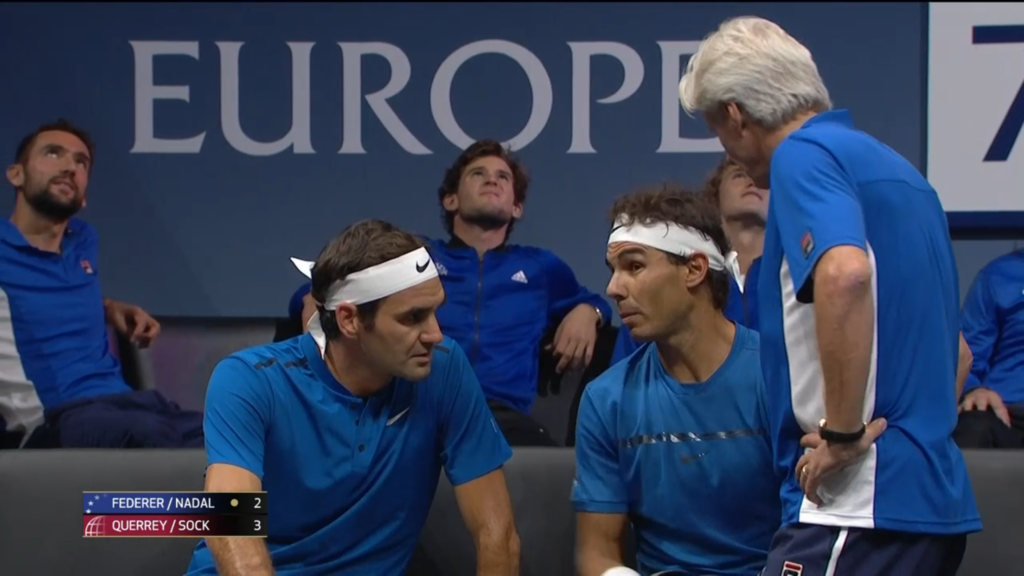
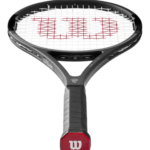
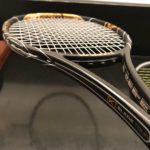

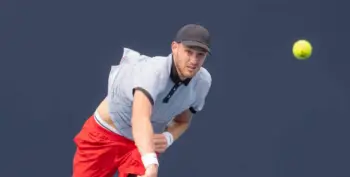
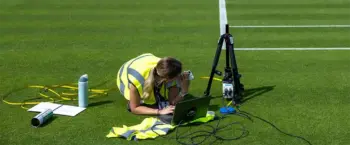

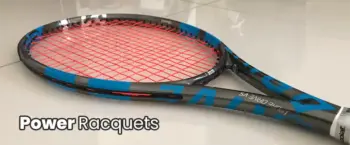
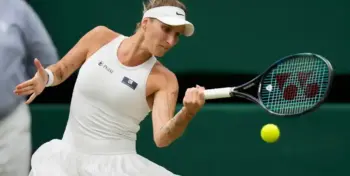




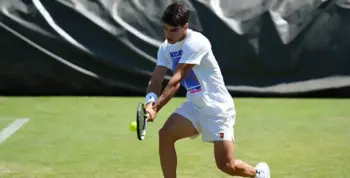


Should there be a student’s racquet category?
I feel like the need of heavy racquets to keep the swing fast is because of the smaller headsize that usually come with the high weight, the headsize doesnt provide as much power as the MidPluses and Oversize. The other thing with the heavy small head sized racquets, it actually makes it easier to swing faster and being stable in the air due to form factor. It helps itself.
With bigger head sizes, to me, it becomes a more of a “redirect” technique, no much need to overcome the ball, but reuse the incoming energy to another direction, add spin for clearance. if You swing faster, while comfortable as well due to ligher weight, the bigger headsize will actually drag more on swing path than the smaller one.
In the end, it all comes to swingweight, the one amazing spec most users dont know….regardless of weight and headsize, its a good measure on how heavy the racquet feels when swinging it. you can have high swingweights with a light racquet due to the way they setup the layup. Balance would also most likely be HH or even then. I have 360g racquets with small heads and 14pts HL and dont feel heavy at all, and can whiplash the ball. Havent measured the swingweight, but its gotta be damn low.
Manufacturers use this spec to make all the racquets competitive to the rec user (300s? more or less depending on models) in all their models nowdays. Hard to find anything higher than 330 stock these days. AKA, most racquets today are easy to swing not only because of the static weigh, but also due to their more standarized even balance and lower swingweights.
Jonas,
As you keep mentioning that you are very sensitive to arm-health, do you have any comments on head heaviness/lightness with regards to elbow health? I’ve been experimenting with a couple of Microgel Radical OS’s (very flexible but also very high twist weight/stability) that I’ve extended slightly and tip-weighted to try to improve their mushy serving performance. To keep the overall weight manageable–less than 350g–I’ve ended up with a balance of about 13cm. Is that too head-heavy for arm health?
Historically, my elbow has often been sore a few hours after playing (not sure of the MGROS is helping or hurting yet). I’d appreciate alternate racquet and/or setup suggestions! I’m 51 but tend to play and swing pretty hard. I hit with more spin than most people I play with, but probably wouldn’t be considered a ‘spin monster’.
Best,
Jaime
Hi Jaime,
This is an interesting topic. In general, more weight in the head will create a more stable racquet, which is good for the arm, but if the extra swing weight does something to your technique or makes you mishit more often, this will be a bad thing for your arm health. The worst thing for arm health in my experience is light and stiff racquets, so more weight is almost always good (except for shoulders). Please remember to relax your arm and use your trunk rotation to hit through the ball. Since you hit with a lot of spin, I imagine you use a western grip and that tends to create more strain on your elbow.
What strings are you using? If you are using stiff poly strings that can also have a negative effect.
When you write 13 cm balance? Do you mean 33 cm? Sounds like you use a pretty monstrous swing weight!
Cheers / Jonas
I would actually go as far as to say that, unless you have really proper technique, a heavy racquet reduces your ability to hit a strong ball the moment your opponent starts moving you around. I’ve played with the Pure Drive for 15 years and it produces amazing power while being of an average weight. My brother used a Pro Staff at one point and he wasn’t producing considerably more power compared to when he switched to the Pure Drive. At the end of the day technique is king and players should stick to weights they can handle effectively at whatever level they’re at. That way they’ll be able to fully execute their shots thus getting the maximum possible power they are able to produce from all positions.
I recently dive into the science of swing weight and twist weight. One simple solution to add more swing weight without putting extra static weight onto your racquet is simply replace your dampener to the top of your racquet. By my expereience, that simple replacement adds roughly 10g of SW to the racquet. SW is the magic of more power and stability.